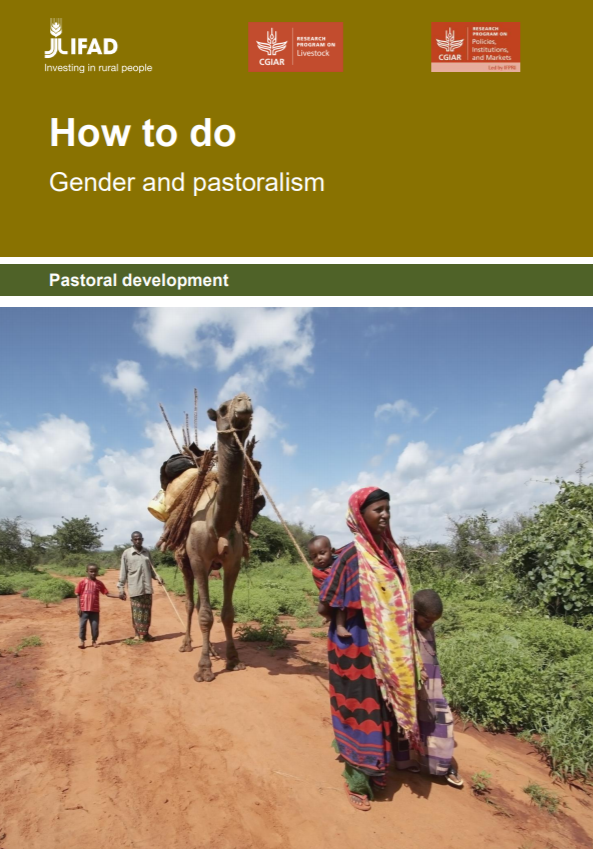Women’s participation in community governance and local development is often limited by patriarchal discourses, biases, and norms that define gender roles. Given pastoralist women’s role as resource managers, agents of change, and development actors, securing their place in decision making processes and enhancing their access to services and market opportunities represent strategic investments in pastoral societies. Investing in pastoralist women is also important to reverse certain malpractices such as limited recognition of their inheritance rights.
However, how to do this in order to fully benefit women, and without damaging the collective nature of pastoral societies of which both women and men are a part, continues to be a challenge for development actors. A new How To Do Note on Gender and Pastoralism developed by the International Fund for Agricultural Development (IFAD) in collaboration with two CGIAR research programs - Policies, Institutions, and Markets (PIM) and Livestock - provides guidance on key issues to consider and tools and processes to use in project design and implementation. The new note builds on the earlier, more general How to Do Note on Engaging with Pastoralists.
The note stresses the importance of undertaking a gender analysis of the current pastoral system prior to project design. Such analysis can help to obtain the necessary qualitative information to understand the different roles and priorities of women and men, identify what resources they have access to and control of, and uncover the reasons for any gender-related issues. With this information available, projects can be designed to ensure that pastoralist women play more acknowledged and empowered roles supporting the sustainability of the overall pastoral production system. While explicitly a project may target women only, it is still important to always include men in the gender analysis to get a full picture.
The note also provides guidance on possible interventions to address gender disparities and empower women, and provides examples of good practices from IFAD country interventions. The importance of establishing a strong monitoring and evaluation plan is also highlighted. For quantitative data collection, the note recommends the Women’s Economic Empowerment in Agriculture Index (WEAI), and for measuring women’s empowerment in a livestock-based livelihood context it suggests the Women’s Empowerment in Livestock Index.
For more information on the note, please contact Fiona Flintan (f.flintan@ifad.org or f.flintan@cgiar.org)




